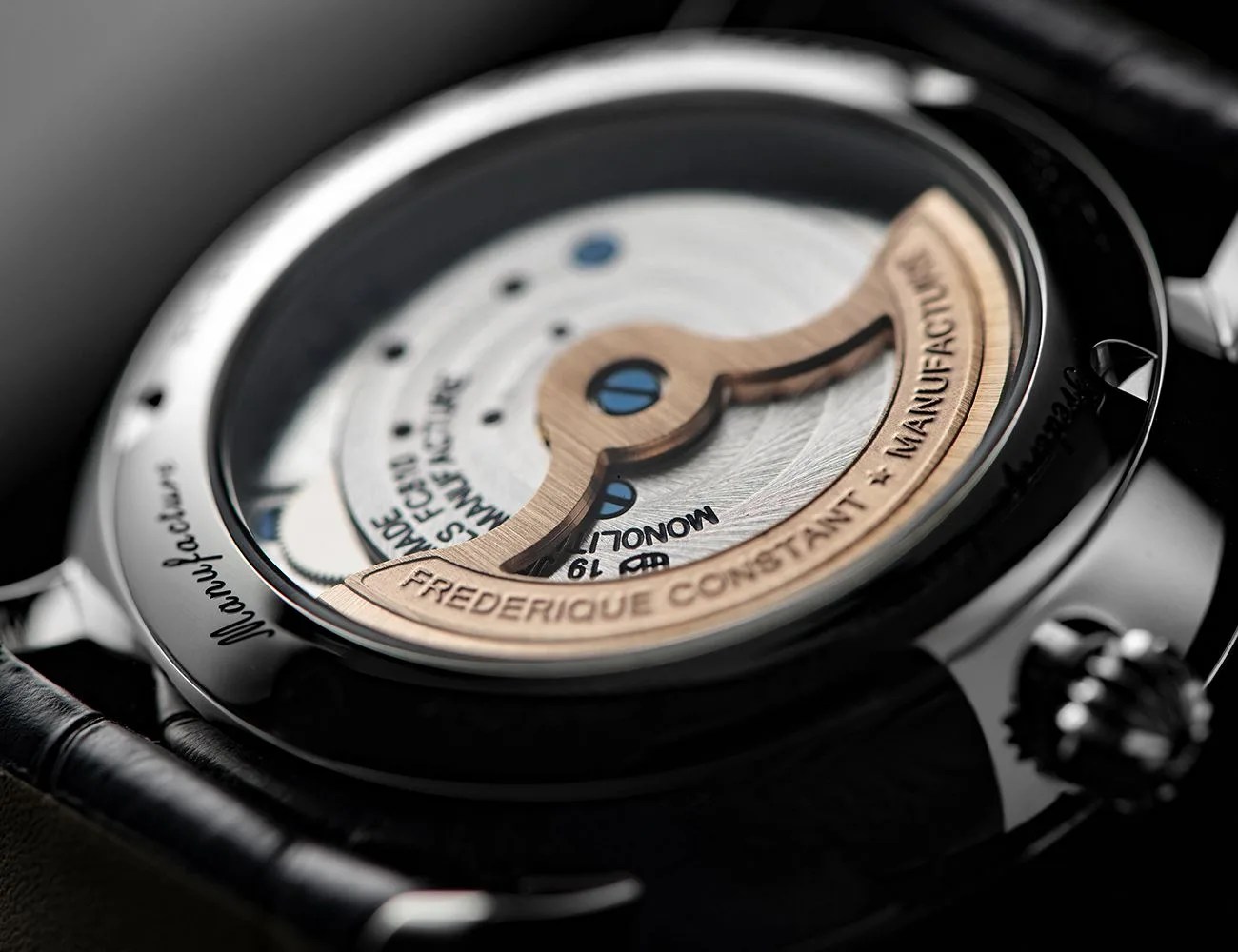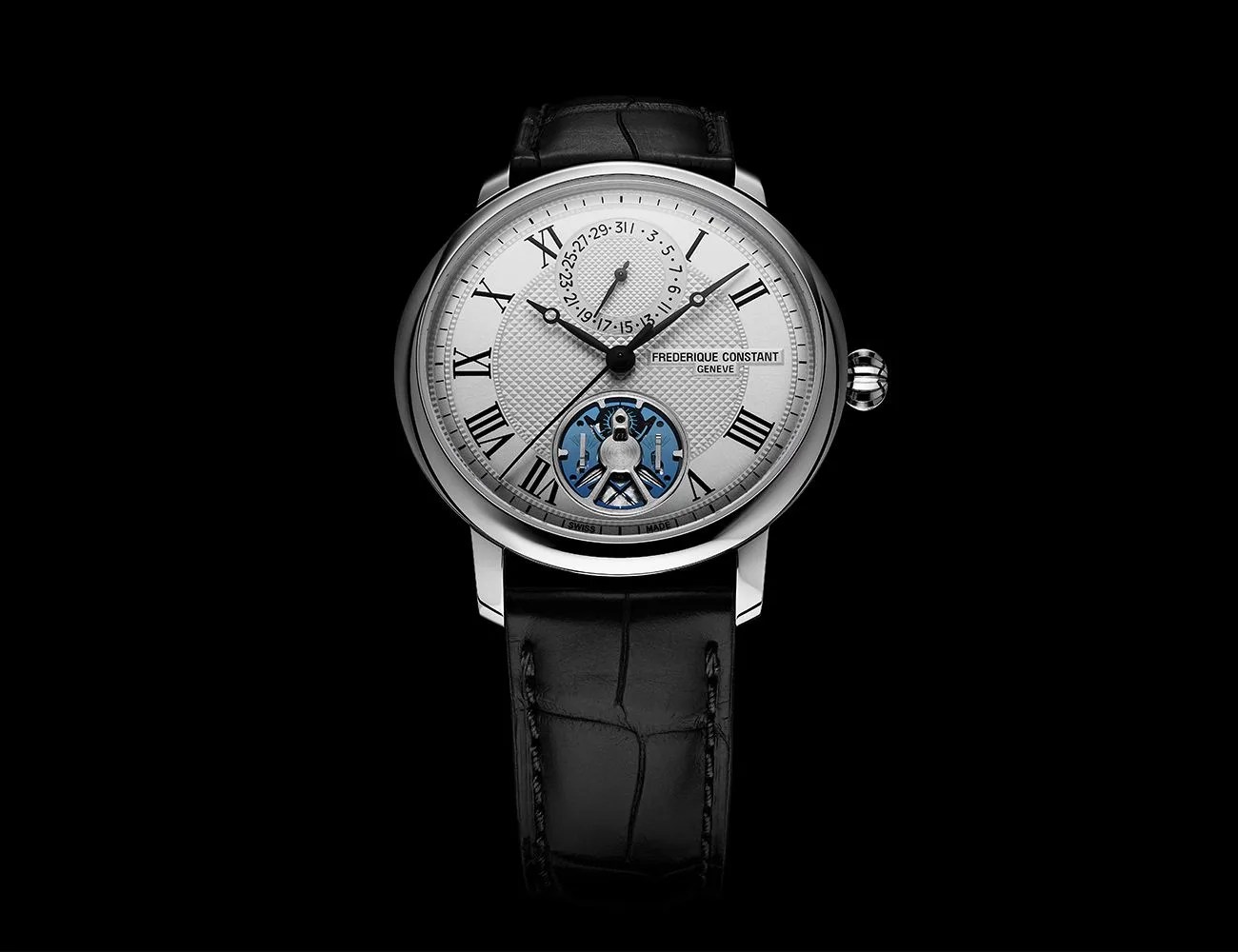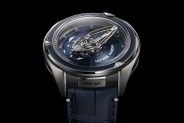Most mechanical watches function on centuries-old technology. Indeed, that’s precisely the reason people like them — but it means that much of the progress in horology has to do with things like materials and how the parts are produced, rather than with basic mechanical principles.
But there are exceptions. One rare example of a different take on traditional watchmaking has just arrived, courtesy of silicon’s remarkable properties — and Frederique Constant, a Swiss watchmaker known for its classical designs and affordable prices.
Many Frederique Constant watches feature a dial cutout to reveal the movement’s oscillating balance wheel, the mechanism that swings back and forth at a regular pace in order to keep your watch accurate. Look at the new Frederique Constant Slimline Monolithic Manufacture watch, however, and you’ll see something a bit different…even if you might not know at first what you’re even looking at.
Instead of the familiar wheel, there’s a blue structure that simply appears to be…vibrating. Thanks to silicon’s physical flexibility, the company says that it’s managed to replace the 26 components of a traditional balance wheel with a three-component structure, the primary piece of which is a silicon disc that’s only 0.3mm thin. And rather oscillate 300 degrees at the traditional balance wheel’s 4Hz speed, the silicon disc turns only six degrees and operates at 40Hz.
 Courtesy
Courtesy Courtesy
CourtesyAll this tech is incorporated into an otherwise essentially traditional automatic movement which the brand produces in-house. (The concept is reminiscent of the Defy Lab watch Zenith introduced in 2017 around the time that Frederique Constant began development on its own tech.)


